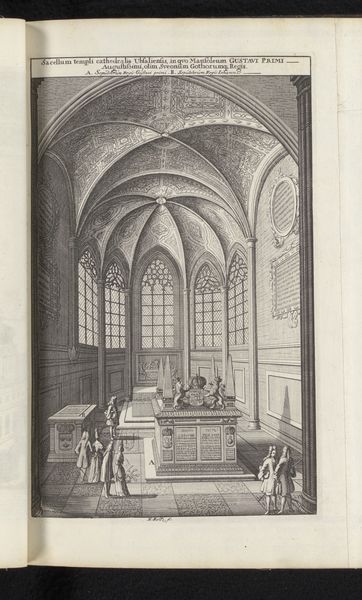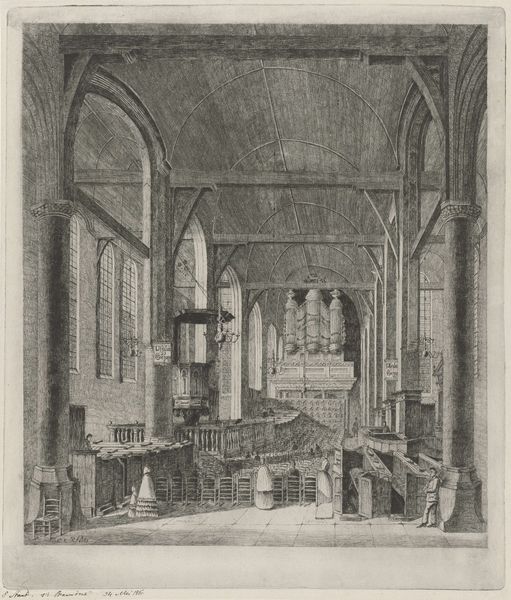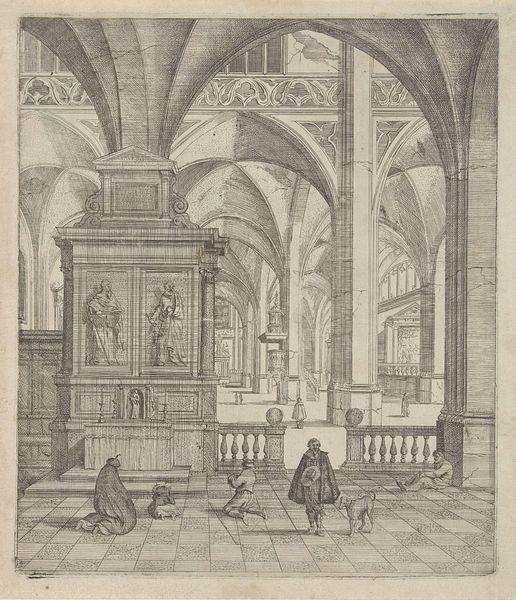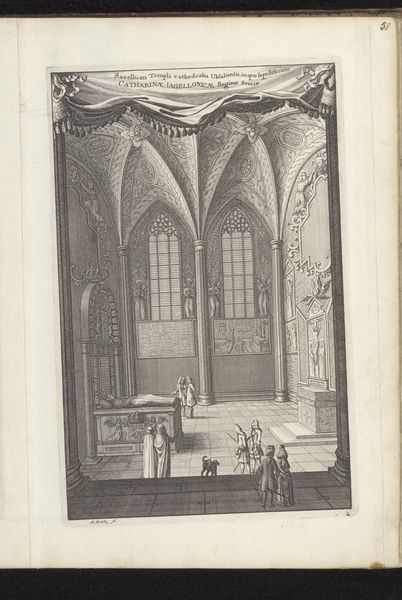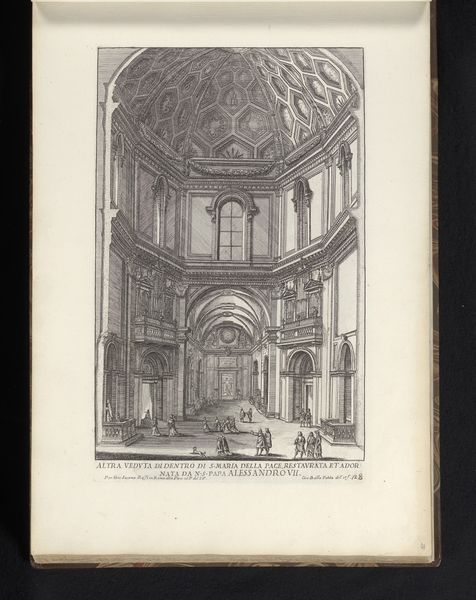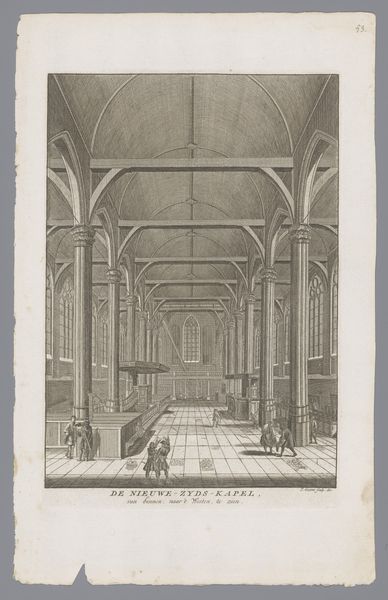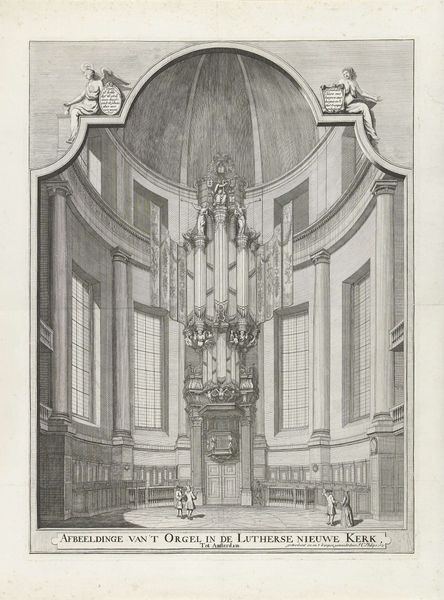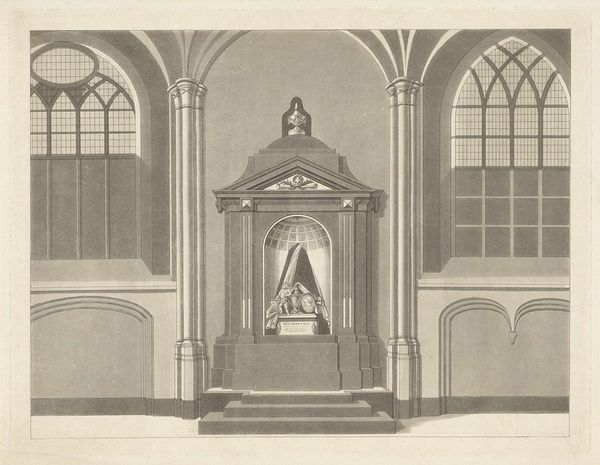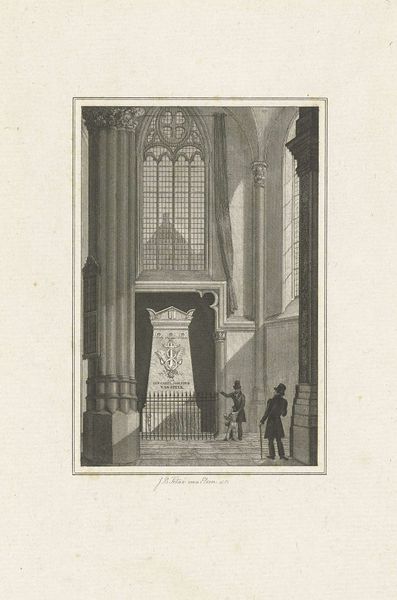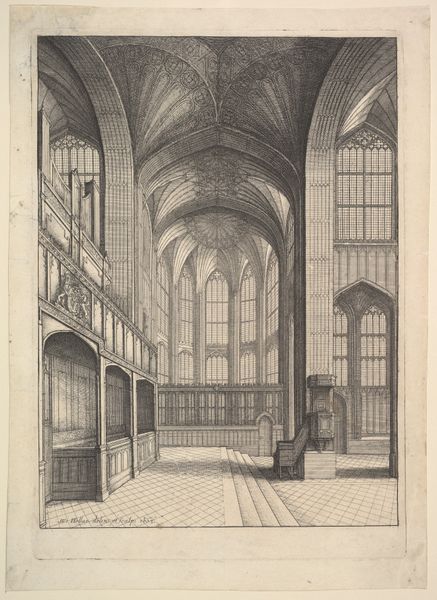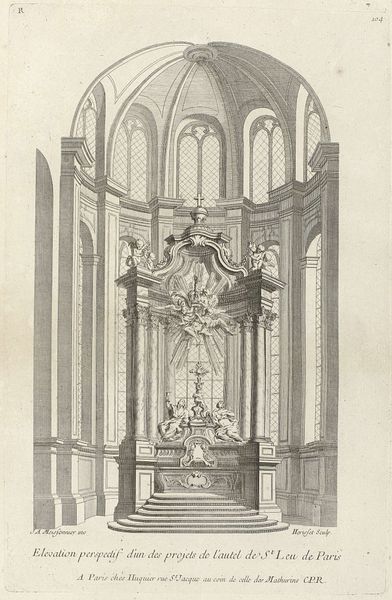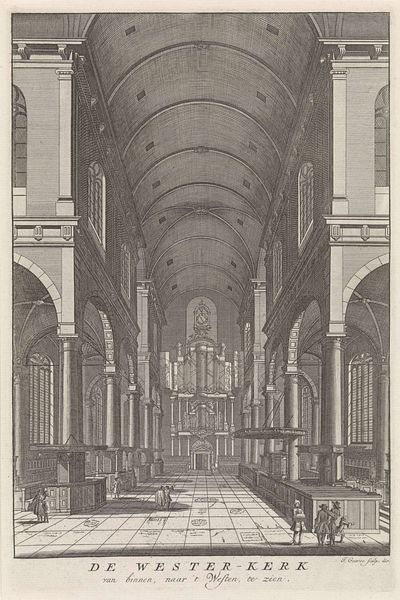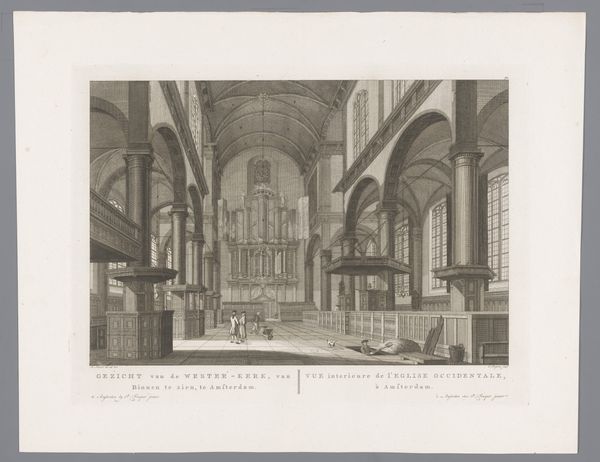
print, engraving, architecture
#
baroque
# print
#
landscape
#
form
#
line
#
history-painting
#
engraving
#
architecture
#
realism
Dimensions: height 279 mm, width 178 mm
Copyright: Rijks Museum: Open Domain
Curator: So, here we have Willem Swidde's engraving, "Twee grafmonumenten in de kerk van Riddarholmen," dating back to 1696. It resides in the Rijksmuseum. Editor: Immediately, I’m struck by the stillness of the image. It’s a captured breath, an almost ghostly serenity held within those strong, unwavering lines. Curator: That stillness is really palpable. The crisp lines emphasize the Baroque style; all form and meticulous detail capturing these imposing tombs inside the Riddarholmen Church. Swidde truly captures the architectural majesty. Editor: Absolutely, but what power dynamics are at play in eternalizing these figures in such grand fashion? Who gets remembered and celebrated so lavishly? What does this say about societal values and the hierarchies they perpetuate? Curator: It's impossible to ignore the social and political context that's embalmed into these depictions, that's for sure! For me, it feels as though Swidde’s sharp realism offers not just an image of the tombs, but also this strange transparency. It's like peering into a kind of contained universe. A reverie. Editor: Transparency is an interesting choice of words. Given that these monuments likely memorialize powerful men, could that clarity also be interpreted as a celebration of power, perhaps even a subtle endorsement of the status quo, rendered in stark, inescapable lines? What’s absent from this frame is just as loud. Curator: I see what you mean. Perhaps he’s laying bare the very foundations on which power rests… even, literally, laying them *in state.* There's something rather cheeky in that. Don't you think? It also allows us to be witnesses, outside of time, to consider the forms and ideas. Editor: That feels generative, it reframes our viewing and allows a space for critical analysis and to interrogate. A reflection not just on the artistry, but on the ideologies it implicitly upholds. It’s a useful point about *allowing* the space to consider ideas. Curator: Exactly. It gives us room for contemplation beyond the Baroque opulence and line. A moment of thought... of breath, like you said at the start. Editor: Precisely, art isn’t made in a vacuum; it inherits our reality and perpetuates its truths and failings, however silently, with every captured breath and stroke.
Comments
No comments
Be the first to comment and join the conversation on the ultimate creative platform.
